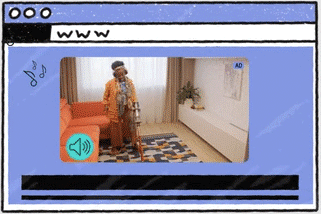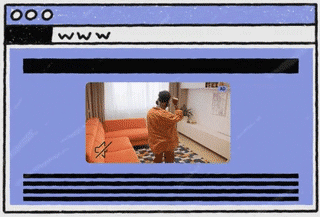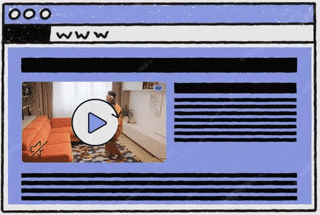The new PLCMT video definitions, which the IAB Tech Lab updated last year, provide a consolidated breakdown of video ad formats. With implementation underway, these guidelines aim to improve the ad experience for consumers, make it easier for marketers to accurately identify video inventory, and help media owners achieve optimal monetization.
Now that the industry has had time to test the new video signals and begin adoption, many buyers and DSPs are enforcing the new standards.
If you have not yet adopted the new standard, now is the time. Here’s what you need to know.
What are the new PLCMT video definitions?
The IAB Tech Lab introduced the video.PLCMT field along with updated definitions for the video placement categories when it released the latest OpenRTB spec in March 2023.
The new PLCMT definitions are:

Instream: Arguably the most coveted designation for digital video, instream now exclusively refers to an ad displayed within a video player that’s sound on by default or has explicitly clear consumer intent to watch a video. This updated definition of instream in the PLCMT attribute replaces the legacy in-stream definition in the placement attribute.
- Main focus of the page
- Sound on by default (unless browser suppresses it) or clearly demonstrated consumer intent
- Pre-roll, mid-roll, or post-roll positions

Accompanying content: These video ads play within video content. While they may have been designated as instream previously, the new instream video definition explicitly requires that the consumer’s sole purpose is to watch the video. In the case of accompanying content, the consumer may be on a page to watch a video or just to read an article.
- May be at top of article or in article
- Sound off by default (best practice for auto-play video per the Coalition for Better Ads and IAB Gold Standard)
- Auto play when unit is in view
- Pre-roll, mid-roll, or post-roll positions

Standalone or no content video: These placements have no other video content associated with the ad and play with the sound off by default. These videos were largely lumped into the outstream category previously.
- In-article, in-banner, in-feed, or floating
- No video content associated

Interstitial: Interstitials are full-screen or takeover video ads, such as in-app video or slideshow placements, that are played without supporting video content. These ads must be the primary focus of a page when playing and cannot be scrolled out of view.
- Mostly in-app
- Full-screen
You can learn more about the new video placement guidelines in this Index Explains video with the IAB Tech Lab’s Hillary Slattery and Index’s Tyler Taylor.
Why should you adopt the new standard?
The IAB Tech Lab deprecated the video.placement signal last year in favor of the more granular video.plcmt field. Further, DSPs like Google DV360 and The Trade Desk are taking a proactive stance and will require both media owners and marketers to use the PLCMT signal when serving and buying video ads.
To ensure that all video advertisements are appropriately categorized and positioned and avoid any disruption to your campaigns, you should start using the PLCMT signal as soon as possible.
This unified signaling will benefit media buyers, media owners, and consumers in several ways.
- Optimized yield and increased revenue: The new PLCMT categorization allows media owners to lean into true premium, instream video content and properly categorize additional video content, which presents a better opportunity to merchandise scalable inventory options to media buyers.
- Stronger performance: With more accurate video signaling, marketers can make more informed decisions around their video strategy. The PLCMT signal provides transparency to help balance between scale and cost efficiencies while tapping into highly engaging advertising options.
- Improved consumer experience: The PLCMT signal enables both media owners and marketers to deliver more relevant and engaging video ads to consumers, which leads to a better viewing experience.
What’s the impact on the digital video landscape?
Once the industry widely adopts these new video definitions, the IAB Tech Lab predicts that fewer than 10% of web video will be categorized as instream. Some inventory that was previously classified as instream and was being bought as such is now accurately designated as accompanying content. This inventory continues to stay highly engaging and elevated and is now available at scale for buyers.
Both accompanying content and instream video can be effective ways to engage readers and viewers. Standalone or no content and interstitial inventory are highly viewable placements that provide an efficient way to increase reach and meet performance metrics. All the new PLCMT designations can help media owners increase engagement, traffic, and revenue through video.
By embracing the PLCMT signal, media owners and marketers can work hand-in-hand to elevate the digital advertising landscape, delivering a more relevant and engaging experience for consumers while unlocking greater revenue opportunities.
What actions do you need to take to support PLCMT?
To support the new PLCMT signaling, media owners will need to upgrade to the latest version of Prebid. We always recommend upgrading to the latest version to take advantage of key monetization opportunities and the latest features.
Marketers will need to adjust their video buying strategy to accommodate the new premium accompanying content formats where previously they may have targeted only instream. Media buyers can also realize scale and performance through standalone and no content inventory.
To facilitate a seamless transition, the IAB Tech Lab has provided comprehensive resources, including a technical specification and a sample implementation, to guide you in integrating the PLCMT signal. We have also updated the Index Knowledge Base with additional guidance for current customers. These resources aim to simplify the implementation process and ensure that all stakeholders can effectively embrace this new standard.
If you have any questions about the PLCMT signal or the deprecation of the video.placement field, please get in touch. We’re here to help you through this transition.
Back to blog



